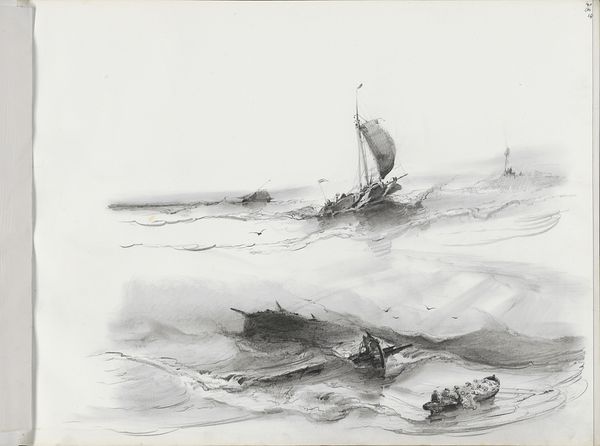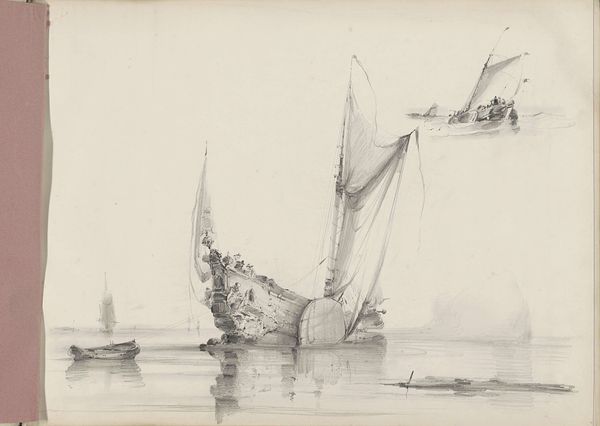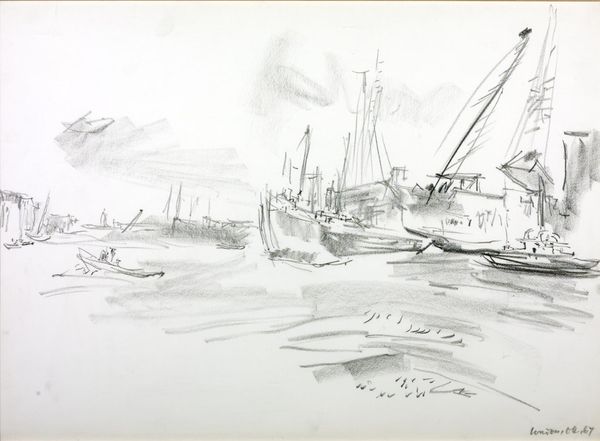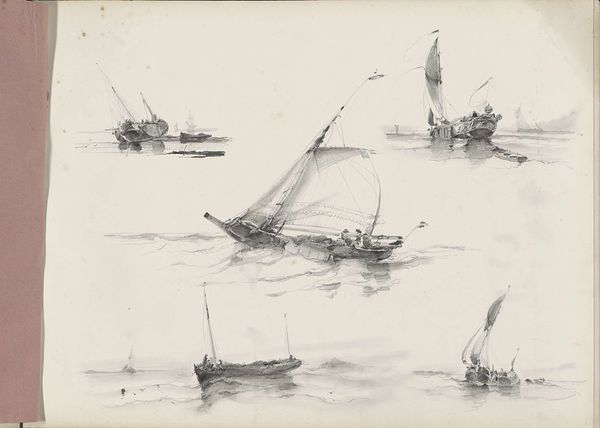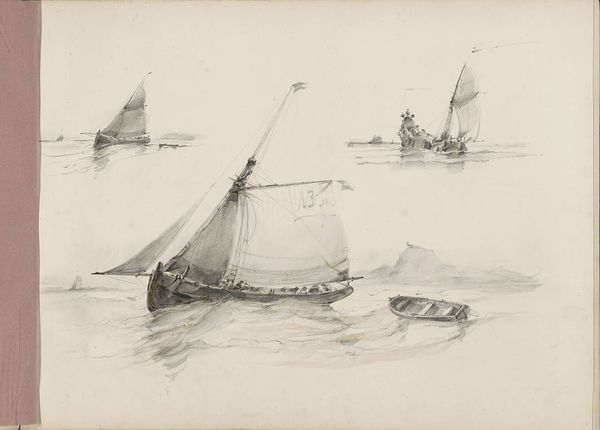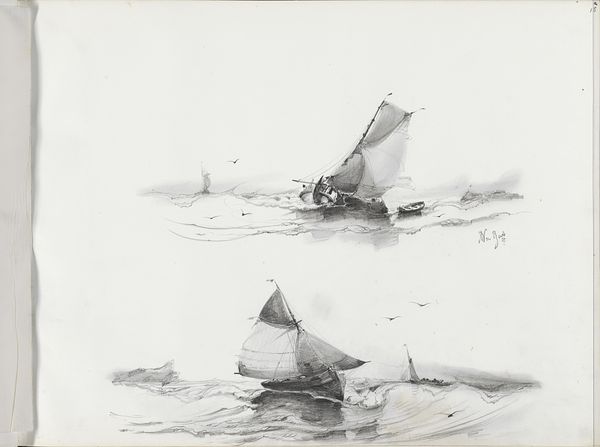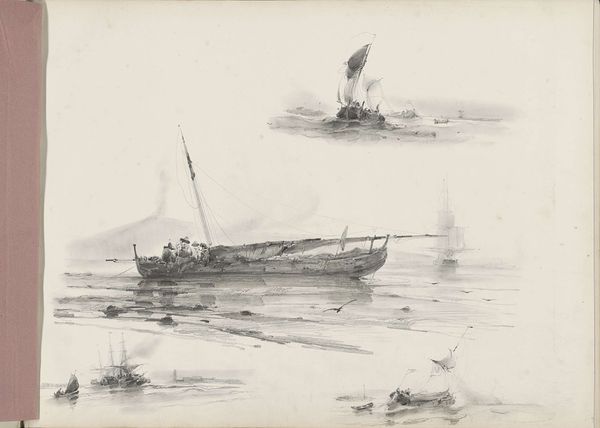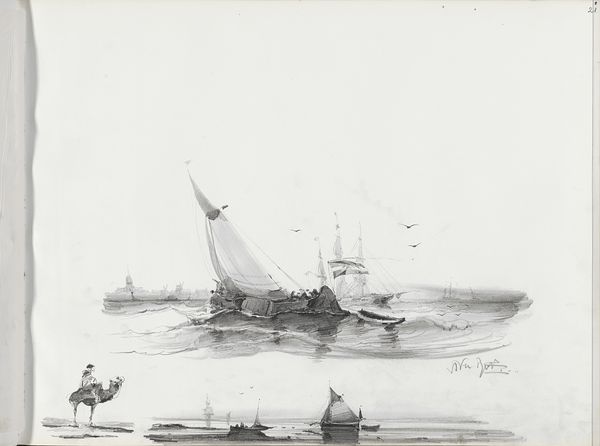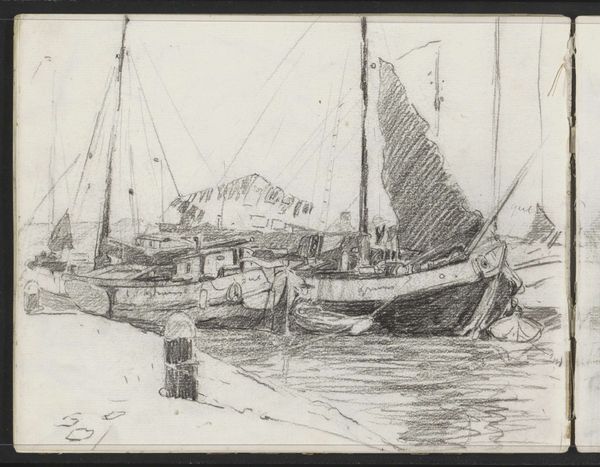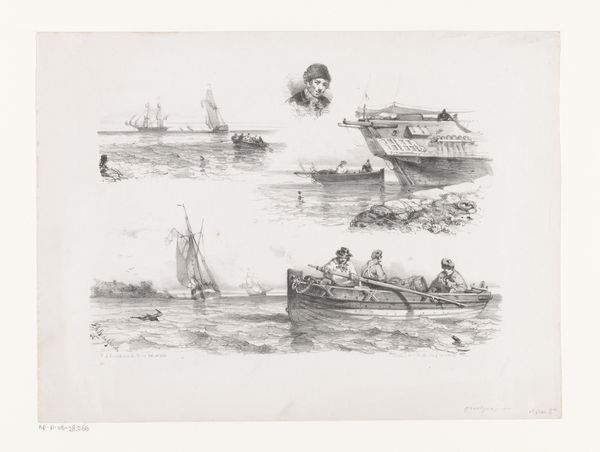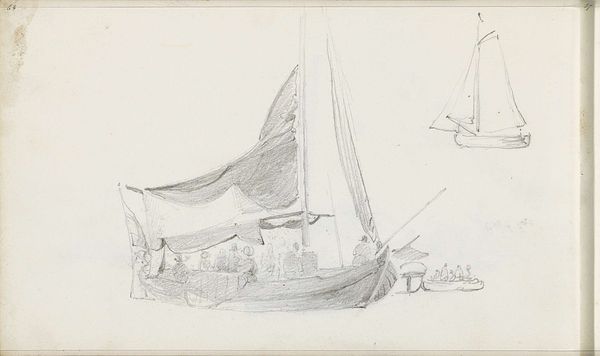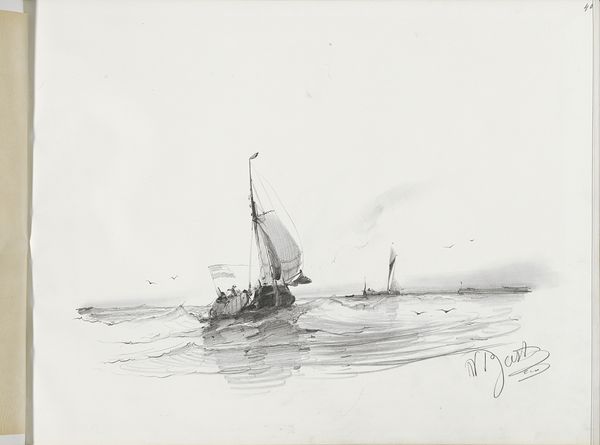
Studieblad met aangemeerde bomschuiten en kamelen in een woestijnlandschap 1830 - 1860
0:00
0:00
albertusvanbeest
Rijksmuseum
drawing, pencil
#
drawing
#
landscape
#
romanticism
#
pencil
#
orientalism
Copyright: Rijks Museum: Open Domain
Editor: We're looking at a pencil drawing titled "Studieblad met aangemeerde bomschuiten en kamelen in een woestijnlandschap" – or Study Sheet with Moored Bombshells and Camels in a Desert Landscape – by Albertus van Beest, created sometime between 1830 and 1860. It’s currently held at the Rijksmuseum. I’m immediately struck by the duality of the subject matter, ships alongside camels – how curious! What stands out to you in this work? Curator: It's a curious juxtaposition, isn’t it? My eye is drawn to the overall composition. Note how van Beest divides the page into distinct registers. The foreground, populated with detailed studies of boats, anchors the composition. Then, our gaze is led to the ethereal upper register where camels traverse a seemingly boundless desert. The artist deliberately utilizes line and tonal gradation to create depth and atmosphere. How would you describe the quality of line, generally? Editor: I’d say the lines are delicate, especially in the upper portion of the drawing; much softer there. Curator: Precisely. The contrast between the sharply defined forms of the boats in the foreground and the hazy rendering of the desert landscape enhances the sense of distance and the exotic otherness of the Orient. The consistent pencil strokes and shading seem to point to a focused study in tonal values. It's less about precise representation and more about the interplay of light and shadow, isn’t it? What feeling does this overall technique create in you? Editor: A sense of reverie. It’s like looking at a faded memory or a dream. The soft rendering certainly does give the piece that effect. I didn't pick up on the foreground/background effect, though; I was focused on the contrast between camels and boats! Curator: The drawing allows us to see how seemingly disparate forms may create new understanding by merely being put in contrast with each other. And to that end, we create the work through its close inspection. Editor: I'll remember to broaden my view. Thanks for this expanded understanding of the artwork!
Comments
No comments
Be the first to comment and join the conversation on the ultimate creative platform.
